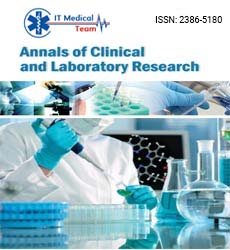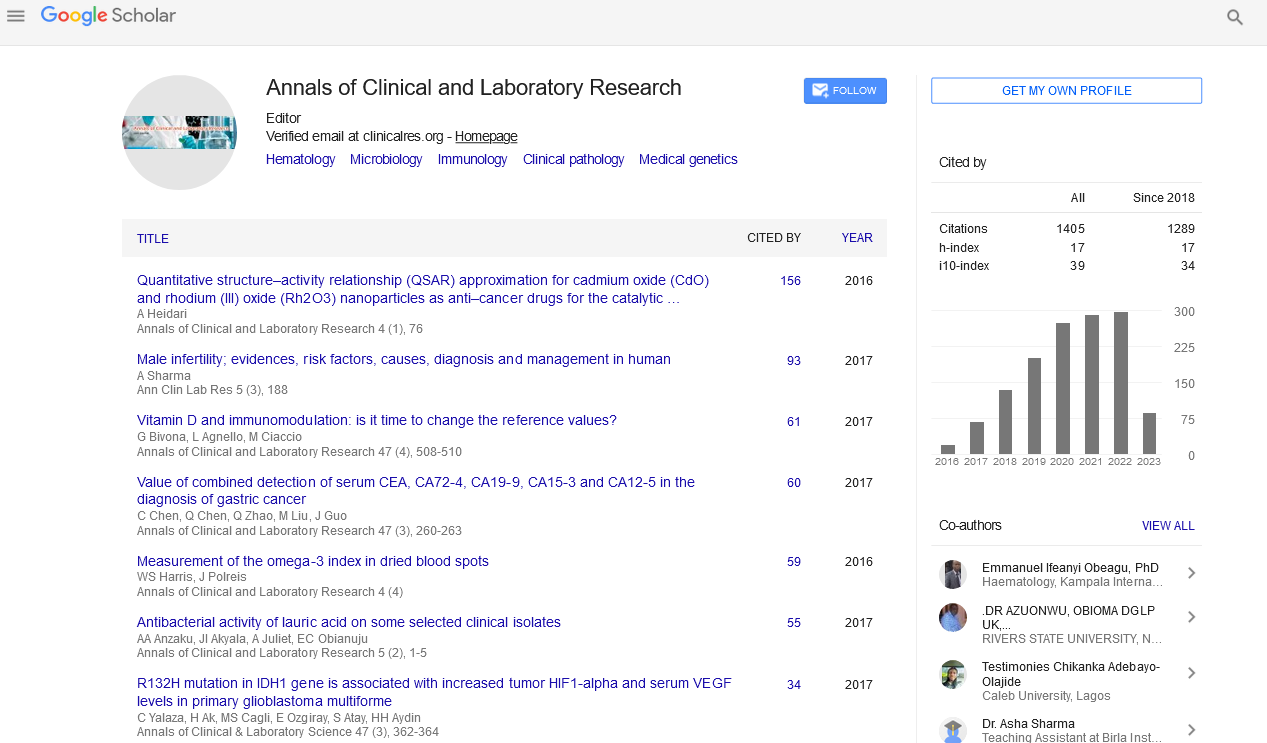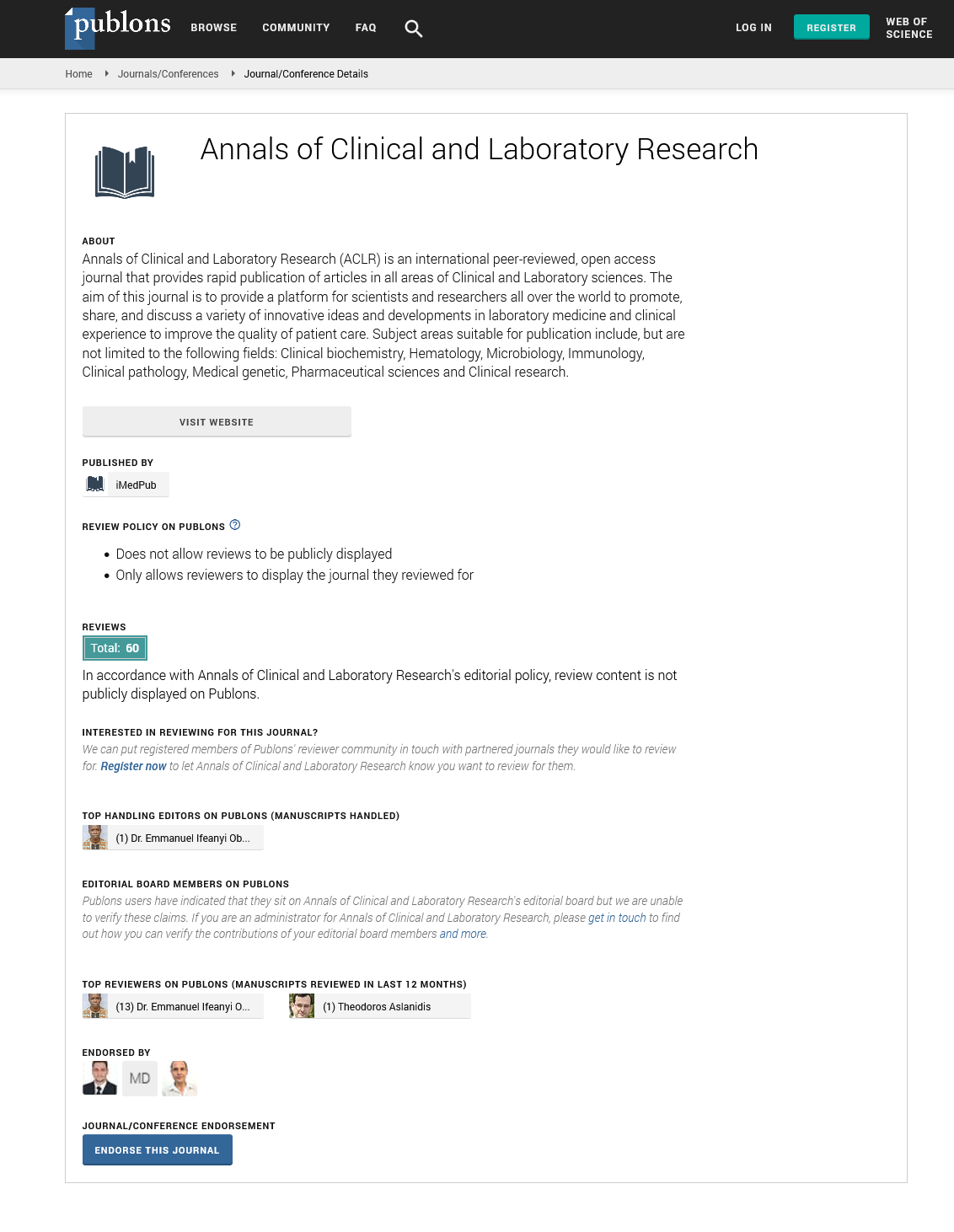Perspective - (2022) Volume 10, Issue 5
Effect of Corona Virus Disease on Hospital Acquired Infections
Received: 05-Apr-2022, Manuscript No. IPACLR-22-411;
Editor assigned: 07-Apr-2022, Pre QC No. IPACLR-22-411(PQ);
Reviewed: 21-Apr-2022, QC No. IPACLR-22-411;
Revised: 02-May-2022, Manuscript No. IPACLR-22-411(R);
Published:
09-May-2022, DOI: 10.36648/2386-5180.22.10.411
Abstract
While there are laid out and compelling rules for avoidance of medical clinic procured contaminations (HAIs), the effect of the COVID-19 pandemic on those carried out practices and approaches have not been totally explored. This report inspects the effect of COVID-19 on HAI rates at 2 medical clinics inside a similar medical care framework. HAIs altogether expanded during the COVID-19 pandemic which related with the utilization of additional time and office nursing hours.
Keywords
Pandemic, COVID-19, Hospital-acquired infections
Introduction
The on-going COVID-19 pandemic has been a shock to the
worldwide and United States clinical framework. While there are
laid out and compelling rules and techniques for avoidance of
clinic gained diseases (HAIs), the effect of the pandemic on these
accepted procedures have not been completely explored. It was
anticipated that the gadget related diseases, Catheter-Related
Urinary Plot Contaminations (CAUTIs) and focal line-related
circulatory system contaminations (CLABSIs) would build because
of the adjustment of the intricacy of hospitalized patients and the
security rehearses that were carried out to diminish COVID-19
transmission hazard to medical services suppliers (ie, go into
patient room less oftentimes) [1]. It was likewise anticipated that
Methicillin Safe Staphylococcus Aureus (MRSA) and Clostridiodes
Diseases (CDIs) would diminish because of expanded natural
cleaning. Early review results are blended on the pandemic's
effect on HAIs. The point of this study is to inspect the effect
that this pandemic had on CAUTIs, CLABSIs, MRSA, and CDIs at
2 clinics in Illinois. Careful site diseases were excluded because
of the enormous change in careful volume that harmonized
with the pandemic. Furthermore, nurture staffing levels and
COVID-19 case rates are remembered for a direct relapse model
to figure out which covariates are fundamentally connected with
expanded HAI rates [2].
Numerous covariates fundamentally related with both individual
and joined HAI rate during COVID-19. A multivariate straight
relapse was performed to decide whether the non-clinical
variables of staffing and COVID-19 cases and passings in the space
altogether associated with the HAI increments. While adapting to
percent of Illinois and district level COVID-19 cases and passings, the percent of premium compensation hours was altogether
connected with an expansion altogether HAI rates. Each 1%
increment in premium compensation hours brought about 0.13
absolute HAIs while adapting to Illinois level COVID-19 cases and
passings and 0.13 HAIs in adapting to area level information. This
was higher than during the non-COVID time span when each 1%
increment in premium compensation hours brought about 0.077
absolute HAIs [3].
The COVID-19 pandemic fundamentally affected the HAI rates
at these 2 clinics with premium compensation essentially
associated with complete HAIs, especially during the pandemic
when contrasted with gauge. Past investigations have discovered
that COVID-19 patients and COVID-19 assigned units are bound
to have more HAIs than COVID-19 negative patients and non-
COVID-19 units. While these discoveries are significant, they
offer little roads for strategy change other than expanded
clinical practice observation. Our tracking down that exceptional
compensation hours, and specifically office hours, gives a road
to additional exploration and potential arrangement changes
connected with on boarding and proceeding with instruction
[4]. Past meta-examinations have found that non-long-lasting
staff, float medical attendants, and additional time hours are
altogether connected with expanded HAI levels. This has a reestablished
significance with the on-going staffing deficiency in
the clinical field. Guaranteeing that the legitimate preparation
and training is set up for staff and that IP can review and cooperate
with staff could assist with diminishing the expanded disease rates. Expanded consideration regarding adherence of gadget
group components, gadget need and perceptions of IP works
on including hand cleanliness and cleaning ought to happen,
especially during a pandemic flood when staff are flexed to work
in substitute areas or when expansion in organization staff are
used. While these patients had a serious level of intricacy and
frequently had numerous gadgets care was packaged to decrease
the staff experiences with patients and exhaustive gadget care
might have been refuted. Further review is justified to decide
whether these discoveries stay huge with an expanded example
size and more medical clinics [5].
REFERENCES
- McMullen KM, Smith BA, Rebmann T (2020) Impact of SARS-CoV-2 on hospital acquired infection rates in the united states: predictions and early results. Am J Infect Control 48: 1409-1411.
Indexed at, Google Scholar, Cross Ref
- Irelli EC, Orlando B, Cocchi E, Morano A, Fattapposta F, et al. (2020) The potential impact of enhanced hygienic measures during the COVID-19 outbreak on hospital-acquired infections: a pragmatic study in neurological units. J Neurol Sci 418: 117111.
Indexed at, Google Scholar, Cross Ref
- LeRose J, Sandhu A, Polistico J, Ellsworth J, Cranis M, et al. (2021) The impact of coronavirus disease 2019 (COVID-19) response on central-line-associated bloodstream infections and blood culture contamination rates at a tertiary-care center in the Greater Detroit area. Infect Control Hosp Epidemiol 42: 997-1000.
Indexed at, Google Scholar, Cross Ref
- Stone PW, Pogorzelska M, Kunches L, Hirschhorn LR (2008) Hospital staffing and health care–associated infections: a systematic review of the literature. Clin Infect Dis 47: 937-944.
Indexed at, Google Scholar, Cross Ref
- Mitchell BG, Gardner A, Stone PW, Hall L, Pogorzelska-Maziarz M (2018) Hospital staffing and health care-associated infections: a systematic review of the literature. Jt Comm J Qual Patient Saf 44: 613-622.
Indexed at, Google Scholar, Cross Ref
Citation: Stout T (2022) Effect of Corona Virus Disease on Hospital Acquired Infections. Ann Clin Lab Res. Vol.10 No.5:411






